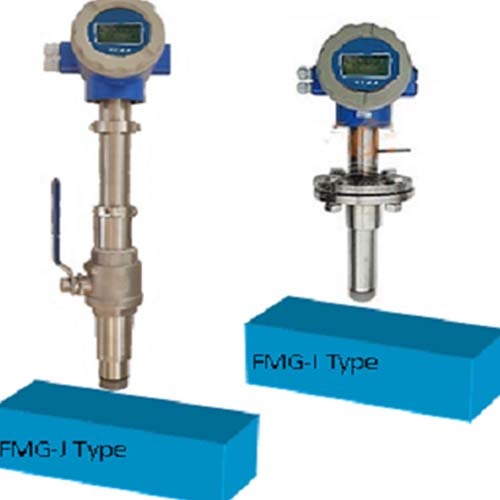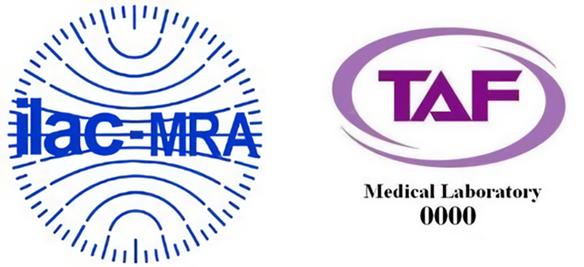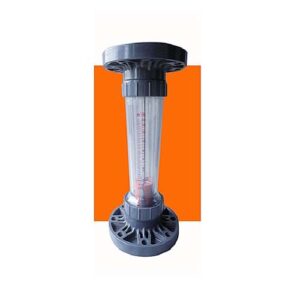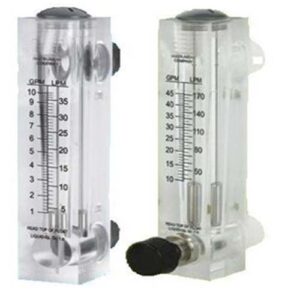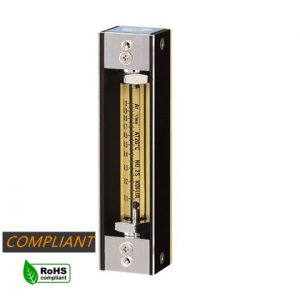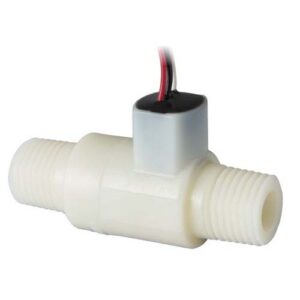FGT think your best choice in the future
System Integration Designers in FGT
FMG-J Insertion Electromagnetic Flowmeter|Electromagnetic Flowmeter Flow Knowledge
FMG-C series: suitable for large pipe diameters above DN100 (DN100~DN3000)|installation method (tee joint/flange connection)|multiple output methods (4~20mA+Rs485+Pulse)|liquid flowmeter|electromagnetic flowmeter Using Faraday's law of induction to detect flow FGT's main business is the production of industrial flowmeters and instrumentation factories
- Description
- Additional information
- Technical Specifications
- Flow range
- Application field
- Order model
- certified
- Special needs
- Inquire now
FMG-J Insertion Electromagnetic Flowmeter
- LCD display function
- Display interface: English or Chinese
- Easy to set up and install/various size range.
- High accuracy: ±1.5% of reading (RD)
- Flow direction function: forward or reverse
- Alarm function: excitation, no liquid pipe alarm.
- Installation method: adjustable fixed type
/The principle of plug-in electromagnetic flowmeter/Flowmeter function
Principle Electromagnetic flowmeter characteristics Why water can conduct electricity
Insertion Electromagnetic FlowmeterThe working principle is based on Faraday's law of electromagnetic induction, which can provide bidirectional high-precision measurement. It is an ideal flowmeter for leak detection and is widely used in many fields. Today, I will mainly introduce the measurement objects and characteristics of the plug-in electromagnetic flowmeter, hoping to help everyone.
Insertion Electromagnetic FlowmeterMeasurement object
Measuring tube, electrodes, excitation coil, iron core and yoke housing. It is used to measure the flow of conductive fluids in tap water, steel, petroleum, chemical industry, electric power, industry, water conservancy and other departments, as well as corrosive conductive liquids such as acid, alkali and salt.
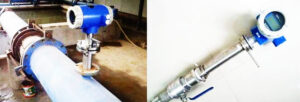
Insertion Electromagnetic FlowmeterFeatures
1. The measurement is not affected by changes in fluid density, viscosity, temperature, pressure and conductivity;
2. There are no obstructing flow parts in the measuring tube, no pressure loss, and the requirements for straight pipe sections are low;
3. The nominal diameter of the series is DN15~DN3000. There are various options for sensor lining and electrode materials;
4. The converter adopts a novel excitation method, with low power consumption, stable zero point and high accuracy. The flow range can reach 1500:1;
5. The converter can be combined with the sensor to form an integral type or a separate type;
6. The converter adopts 16-bit high-performance microprocessor, 2x16LCD display, convenient parameter setting and reliable programming;
7. The flowmeter is a two-way measurement system, with three built-in totalizers: forward total, reverse total and difference total; it can display. Zhuang, reverse flow, and has a variety of outputs: current, pulse, digital communication , HART;
8. The converter adopts surface mount technology (SMT), with self-test and self-diagnosis functions
/Flowmeter Principle Introduction/Electromagnetic Flowmeter Installation/Tap Water Flowmeter
Minutes to immediately understand various flowmeter principles Liquid flowmeters
Electromagnetic Flowmeter(Electromagnetic Flowmeters, EMF for short) is a new type of flow measuring instrument developed rapidly with the development of electronic technology in the 1950s and 1960s. Electromagnetic flowmeter is an instrument that uses the principle of electromagnetic induction to measure the flow of conductive fluid according to the electromotive force induced by the conductive fluid passing through an external magnetic field.
Electromagnetic FlowmeterThe principle is based on Faraday's law of electromagnetic induction. When the conductor moves in the magnetic field to cut the magnetic field lines, an induced potential will be generated in the conductor, and the magnitude of the induced potential is proportional to the effective length of the conductor in the magnetic field and the speed of the conductor in the magnetic field perpendicular to the direction of the magnetic field. In the same way, when the conductive fluid flows in the vertical direction in the magnetic field and cuts the magnetic induction line, an induced potential will also be generated on the electrodes on both sides of the pipe.
The volume flow rate is equal to the product of the fluid velocity v and the pipe cross-sectional area (πD²)/4. When the pipe diameter D is fixed and the magnetic induction intensity B is kept constant, the measured volume flow rate has a linear relationship with the induced potential. If an electrode is inserted on both sides of the pipe, an induced potential can be introduced, and the volume flow can be obtained by measuring the magnitude of this potential.
one,Electromagnetic Flowmeterstructure
Electromagnetic FlowmeterThe structure is mainly composed of magnetic circuit system, measuring catheter, electrode, shell, lining and converter.
1. Electromagnetic electrode system: its function is to generate a uniform DC or AC magnetic field. The DC magnetic circuit is realized by a permanent magnet, which has the advantages of simple structure and less interference by the AC magnetic field, but it is easy to polarize the electrolyte liquid in the measuring catheter, so that the positive electrode is surrounded by negative ions, and the negative electrode is surrounded by positive ions. Surrounding, that is, the polarization phenomenon of the electrodes, and leads to an increase in the internal resistance between the two electrodes, thus seriously affecting the normal operation of the instrument. When the diameter of the pipeline is large, the permanent magnet is correspondingly large, cumbersome and uneconomical, so the electromagnetic flowmeter generally adopts an alternating magnetic field, and is generated by the excitation of a 50HZ power frequency power supply.
2. Lining: There is a complete electrical insulating lining on the inner side of the measuring conduit and the sealing surface of the flange. It directly contacts the liquid to be measured, and its function is to increase the corrosion resistance of the measuring conduit and prevent the induced potential from being short-circuited by the wall of the metal measuring conduit. Lining materials are mostly corrosion-resistant, high-temperature-resistant, wear-resistant PTFE plastics, ceramics, etc.
3. Converter: The induced potential signal generated by the liquid flow is very weak and is greatly affected by various interference factors. The function of the converter is to amplify and convert the induced potential signal into a unified standard signal and suppress the main interference signal. Its task is to amplify and convert the induced potential signal Ex detected by the electrode into a unified standard DC signal.
4. Measuring catheter: its function is to let the measured conductive liquid pass through. In order to make the magnetic flux be shunted or short-circuited when the magnetic field line passes through the measuring conduit, the measuring conduit must be made of materials with non-magnetic conductivity, low electrical conductivity, low thermal conductivity and certain mechanical strength. Plastic, aluminum, etc.
5. Electrode: Its function is to draw out the induced potential signal proportional to the measured value. The electrodes are generally made of non-magnetic stainless steel and are required to be flush with the lining so that the fluid can pass unobstructed. Its installation position should be in the vertical direction of the pipeline to prevent sediment from accumulating on it and affecting the measurement accuracy.
6. Shell: Made of ferromagnetic material, it is the outer cover of the excitation coil of the distribution system, and isolates the interference of external magnetic fields.
2. Principle
1. Basic principles
Electromagnetic FlowmeterThe basic principle is based on Faraday's law of electromagnetic induction
Electromagnetic Flowmeterworking principle:Electromagnetic FlowmeterAccording to the principle of electromagnetic induction of the flange, a pair of detection electrodes are installed on the pipe wall which is perpendicular to the axis of the measuring tube and the line of magnetic force. When the conductive liquid moves along the axis of the measuring tube, the conductive liquid cuts the magnetic line of force to generate an induced potential, which is determined by Two detection electrodes are detected, the value is proportional to the flow rate, and its value is: E=B*V*D*K
The sensor transmits the induced electromotive force as a flow signal to the converter. After signal processing such as amplification, conversion filtering, etc., the instantaneous flow and cumulative flow are displayed by a dot-matrix liquid crystal with backlight.
E : Induced electromotive force
K : meter constant
B : Magnetic induction intensity
D : Measuring tube diameter
V : average flow velocity
2. Three important concepts
(1) Only conductive medium can be measured
Conductivity limitation б≥ 1-5us/cm (water>20us/cm)
(Use special meter for low conductivity)
Cannot measure non-conductive medium, such as gas, oil, such as medium containing a large amount of
gas, producing severe fluctuations in measurement
(2) There must be a magnetic field
The excitation current flows through the upper and lower excitation coils of the measuring tube to generate a magnetic field. Excitation coil open circuit,
The flowmeter does not work, and the stability of the excitation current directly affects the measurement of the instrument
The measuring tube must be a non-magnetic material to ensure that the magnetic field passes through the tube
(Measuring tube should be made of stainless steel)
(3) The actual measured value is the fluid flow rate
The electromagnetic flowmeter actually measures the flow rate of the medium (it is the velocity is the flowmeter)
Measuring the volume flow of a medium
Proficient in flow rate conversion
3. Two important parts
Sensors and secondary instruments are two essential components of electromagnetic flowmeters.
Flowmeter Price / Flowmeter Type / Gas Flowmeter
Biogas Flow Meter / Tap Water Flow Meter
What is the use of electromagnetic flowmeter? | Our performance
| Types of | Electronic |
|---|---|
| Installation method | Insertion |
| Output method | digital, analog |
| Application | Flow Meter |
Technical Specifications
| Model | FMG-J | FMG-I | model | FMG-J | FMG-I | ||||
| Adjustable Type | Fixed Type | Telescopic | Fixed | ||||||
| Size(mm) | 100~3000 | size(mm) | 100~3000 | ||||||
| Application | Raw Water,Pure Water,Waste Water,Liquid of Conductivity >50μS/cm | App types | Raw water, purified water, waste water, conductivity>50μs/cmthe liquid | ||||||
| Peak flow rate | 0.1~10.0 m/s | flow rate | 0.1~10.0 m/s | ||||||
| Conductivity | to be more than 50μS/cm | Conductivity | more than the 50μS/cm | ||||||
| Accuracy | ± 1.5% of reading | precision | ± 1.5% of reading | ||||||
| Repeatability | ± 0.25% of reading | Repeatability | ± 0.25% of reading | ||||||
| Insertion tube size(mm) | ø32mm or ø50mm | Insertion tube diameter(mm) | ø32mmorø50mm | ||||||
| Material of signal electrode and grounding electrode | Mo-containing stainless steel,Hastelloy B,Hastelloy C,Titanium alloy,Tantalum alloy,Platinum-iridium alloy,Stainles-steel-coated wolfram | Material of electrode and ground electrode | Molybdenum-containing stainless steel, HastelloyB, HastelloyC, titanium, tantalum, platinum-iridium alloy | ||||||
| Material of Piping | Carbon Steel,Stainless steel 304,No piping | Measuring tube material | Carbon steel, stainless steel304, without measuring tube | ||||||
| Material of sensor | Stainless steel 1Cr18Ni9Ti | Sensor material | stainless steel 1Cr18Ni9Ti | ||||||
| Max.Temperature with Lining material | Polytetrafluoroethylene | <70℃ | With protective lining material Maximum temperature resistance | Teflon | <70℃ | ||||
| Polyvinyl fluoride | <70℃ | polyvinyl fluoride | <70℃ | ||||||
| Fluorinated ethylene-propylene | <70℃ | Fluorinated vinyl – acrylic | <70℃ | ||||||
| Polychloroprene rubber | <70℃ | Neoprene | <70℃ | ||||||
| Polyurethane | <70℃ | Polyurethane | <70℃ | ||||||
| Max.Pressure | DN100~DN3000 | ≦1.6Mpa | Maximum withstand voltage | DN100~DN3000 | ≦1.6Mpa | ||||
| Display Line | 2 Line with LCD | display panel | 2 Column backlightLCDshow | ||||||
| Protection | IP68 for Body and IP65 for Display | Protection level | IP68 Measuring tube material and IP65 display panel | ||||||
| Output | 4~20mA or 0~10mA or pulse | output signal | 4~20mA or 0~10mA or Pulse output | ||||||
| Communication | RS485(Option),RS232(Option),Hart(Option) with lightning protection | communication signal | RS485(Shop),RS232(Shop),Hart(Shop) | ||||||
| Parts | Vavle | With | Without | Accessories | Ball valve | have | without | ||
| Power supply | AC 85~265V 45~63Hz or DC 11~40V | power supply | comminicate 85~265V 45~63Hz or DC 11~40V | ||||||
Flow range
| DN | Flow Range(m3/h) | ||||||||||
| (mm) | Qmin(0.5m/s) | Q(1.0m/s) | Q(2.0m/s) | Q(3.0m/s) | Q(4.0m/s) | Q(5.0m/s) | Q(6.0m/s) | Q(7.0m/s) | Q(8.0m/s) | Q(9.0m/s) | Qmax(10 m/s) |
| 100 | 20 | 39 | 79 | 117 | 157 | 196 | 235 | 275 | 314 | 353 | 393 |
| 125 | 29 | 57 | 115 | 171 | 229 | 286 | 343 | 401 | 458 | 515 | 573 |
| 150 | 40 | 80 | 161 | 240 | 320 | 400 | 480 | 561 | 641 | 721 | 802 |
| 200 | 62 | 124 | 250 | 374 | 498 | 623 | 747 | 872 | 997 | 1121 | 1247 |
| 250 | 91 | 181 | 364 | 545 | 726 | 909 | 1090 | 1271 | 1454 | 1635 | 1818 |
| 300 | 127 | 254 | 509 | 763 | 1017 | 1272 | 1526 | 1780 | 2035 | 2289 | 2545 |
| 350 | 173 | 346 | 692 | 1039 | 1385 | 1731 | 2077 | 2423 | 2769 | 3116 | 3464 |
| 400 | 226 | 452 | 904 | 1356 | 1809 | 2261 | 2713 | 3165 | 3617 | 4069 | 4523 |
| 450 | 286 | 572 | 1145 | 1717 | 2289 | 2861 | 34347 | 4006 | 4578 | 5150 | 5725 |
| 500 | 353 | 707 | 1413 | 2120 | 2826 | 3533 | 4239 | 4946 | 5652 | 63559 | 7069 |
| 600 | 509 | 1017 | 2035 | 3052 | 4069 | 5087 | 6104 | 7122 | 8139 | 9156 | 10180 |
| 700 | 692 | 1385 | 2769 | 4154 | 5539 | 6924 | 8308 | 9693 | 11078 | 12463 | 13847 |
| 800 | 904 | 1809 | 3617 | 5426 | 7265 | 9043 | 10852 | 12660 | 14469 | 16278 | 18086 |
| 900 | 1145 | 2289 | 4578 | 6867 | 9156 | 11445 | 13734 | 16023 | 18312 | 20602 | 22891 |
| 1000 | 1413 | 2826 | 5652 | 8478 | 11304 | 14130 | 16956 | 19782 | 22608 | 25434 | 28260 |
| 1200 | 2035 | 4069 | 8139 | 12208 | 16278 | 20347 | 24417 | 28486 | 32556 | 36625 | 40694 |
| 1400 | 2769 | 5539 | 11078 | 16617 | 22156 | 27695 | 33234 | 38773 | 44312 | 49851 | 55390 |
| 1600 | 3617 | 7235 | 14469 | 22156 | 28938 | 36173 | 43407 | 50642 | 57876 | 65111 | 72346 |
| 1800 | 4578 | 9156 | 18312 | 28938 | 36625 | 45781 | 54937 | 64094 | 73250 | 82406 | 91562 |
| 2000 | 5652 | 11304 | 22608 | 33912 | 45216 | 56520 | 67824 | 79128 | 90432 | 101736 | 113040 |
| 2200 | 6839 | 13678 | 27356 | 41034 | 54711 | 68389 | 82067 | 95745 | 109423 | 123101 | 136778 |
| 2400 | 8139 | 16278 | 32556 | 48833 | 65111 | 81389 | 97667 | 113944 | 130222 | 146500 | 162778 |
| 2600 | 9552 | 19104 | 38208 | 57311 | 76415 | 955519 | 114623 | 133726 | 152830 | 171934 | 191038 |
| 2800 | 11078 | 22156 | 44312 | 66468 | 88623 | 110779 | 132935 | 155091 | 177247 | 199403 | 221558 |
| 3000 | 12717 | 25434 | 50868 | 76302 | 101736 | 127170 | 152604 | 178038 | 203472 | 228906 | 254340 |
Application field
1. Monitoring of public water resources
*Legacy pipeline installation solution:
A large number of cloth-made plug-in electromagnetic flowmeters solve the requirements of convenience and speed without cutting pipes
*Meter reading record solution:
The integrated installation reduces the problem of borrowing space for different units in the public sector
2. Raw water metering of water works
*Legacy pipeline installation solution:
A large number of cloth-made plug-in electromagnetic flowmeters solve the requirements of convenience and speed without cutting pipes
*Meter reading record solution:
The integrated installation reduces the problem of borrowing space for different units in the public sector
3. Sewage treatment and sewage measurement
Sewage Discharge Solutions:
There is no need to install a flange interface in the construction of the underground pipeline, just insert the opening
c Maintenance cleaning solutions:
Retractable and easily removable sensor head for cleaning
*Emissions metering solutions:
Air traffic control alarm to know the emission status at any time and the cumulative usage status through RS485 signal transmission
4. Filling water metering for printing, dyeing and finishing machine
*Chemical solution:
The acid and alkali resistant sensor head with protective lining is more suitable for use in the liquid pipeline.
*Equipment Solutions:
After installing the front and back ends of the equipment, clearly understand the energy consumption status of the equipment and effectively evaluate the energy status of the whole plant
5. Circulating water monitoring in steel, thermal power and petrochemical plants
*Not sure about water quality installation solutions:
A large number of single types of protective lining grades are used to solve the opaque fluid situation of pipelines in the plant area
*Recycled water solutions:
On-site direct meter reading of the loop recovery pipeline and central monitoring of the cumulative recovery rate
6. Building property chilled water metering
*Building energy saving solutions:
Fast and convenient control of air-conditioning water in and out to improve energy consumption design of old buildings
*Sub-lease solution:
After the distribution pipeline is installed, the user's usage status is known in detail, and the display is used to solve the user's billing doubts
Order model
| Order Information | |||||||||||||||
| FMG | Code | Model Type | |||||||||||||
|
|
J | Adjustable Type(Standard type) | |||||||||||||
| I | Fixed Type | ||||||||||||||
|
|
Code | Electrode Type | |||||||||||||
| N | Standard type | ||||||||||||||
|
|
Code | Piping Type | |||||||||||||
| XXXX | 100~3000mm | ||||||||||||||
|
|
Code | Electrode material | |||||||||||||
| 0 | Mo-containing stainless steel(Standard Type) | ||||||||||||||
| 1 | Hastelloy B | ||||||||||||||
| 2 | Hastelloy C | ||||||||||||||
| 3 | Titanium(Ti) | ||||||||||||||
| 4 | Tantalum (Ta) | ||||||||||||||
| 5 | Platinum(Pt) | ||||||||||||||
|
|
Code | Lining Material | |||||||||||||
| 0 | No(Standard Type) | ||||||||||||||
| 1 | Polytetrafluoroethylene | ||||||||||||||
| 2 | Polyvinyl fluoride | ||||||||||||||
| 3 | Fluorinated ethylene-propylene | ||||||||||||||
| 4 | Polychloroprene rubber | ||||||||||||||
| 5 | Polyurethane | ||||||||||||||
|
|
Code | Max.Pressure | |||||||||||||
| 0 | 1.6Mpa for DN100~DN3000(Standard Type) | ||||||||||||||
|
|
Code | Output | |||||||||||||
| A | 4~20 mA (Standard Type) | ||||||||||||||
| P | Scale Pulse Output | ||||||||||||||
| R | RS-485 MODBUS Communication | ||||||||||||||
| C | RS-232 Communication | ||||||||||||||
| H | Hart Communication | ||||||||||||||
|
|
Code | Max Temperature | |||||||||||||
| 0 | .~70 ℃(Standard Type) | ||||||||||||||
|
|
Code | Display Type | |||||||||||||
| N | Traditional Chinese(Standard Type) | ||||||||||||||
| S | Simplified Chinese | ||||||||||||||
| I | English | ||||||||||||||
|
|
Code | Connection Line | |||||||||||||
| N | Compact-type without cable(Standard Type) | ||||||||||||||
|
|
Code | Power Supply | |||||||||||||
| N | AC 85~265V 45~63Hz(Standard Type) | ||||||||||||||
| R | DC 24 | ||||||||||||||
|
|
Code | Logo | |||||||||||||
| F | FGT Logo(Standard Type) | ||||||||||||||
| N | Printing customer Logo | ||||||||||||||
|
|
|||||||||||||||
| FMG | Complete Ordering Code | ||||||||||||||
| *Note: Using customer Logo launch to more than 100 united for one year | |||||||||||||||

